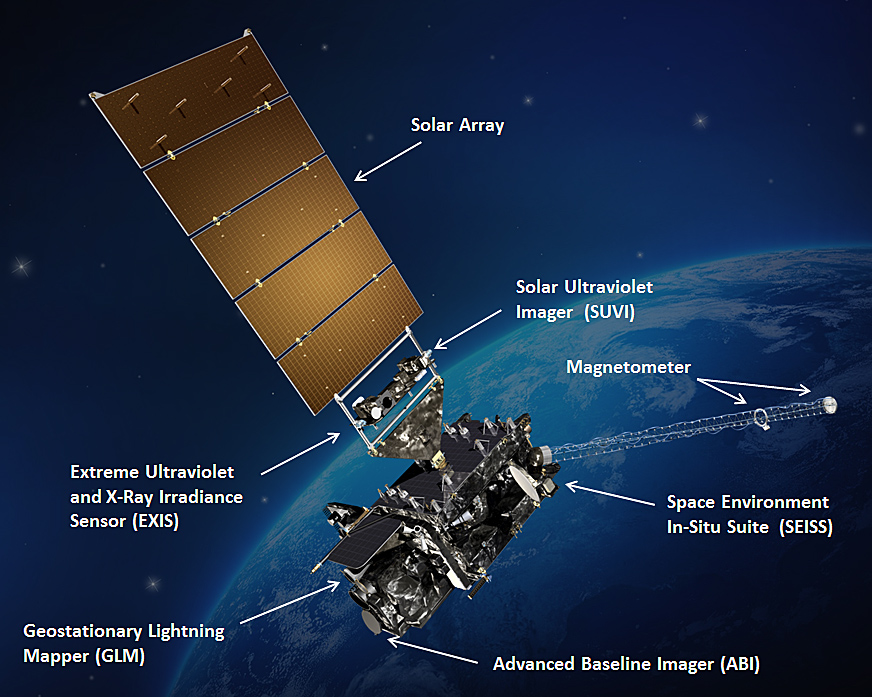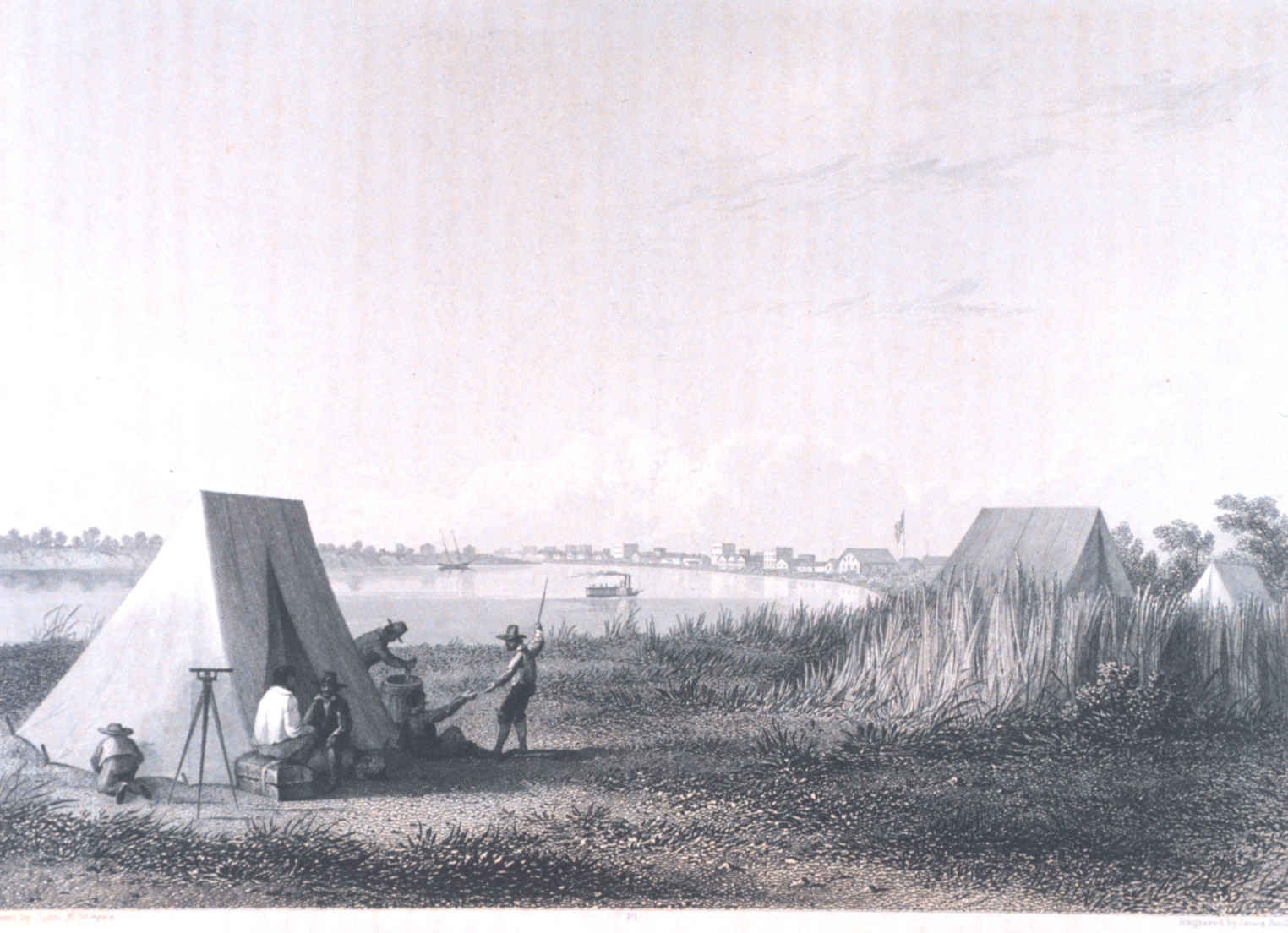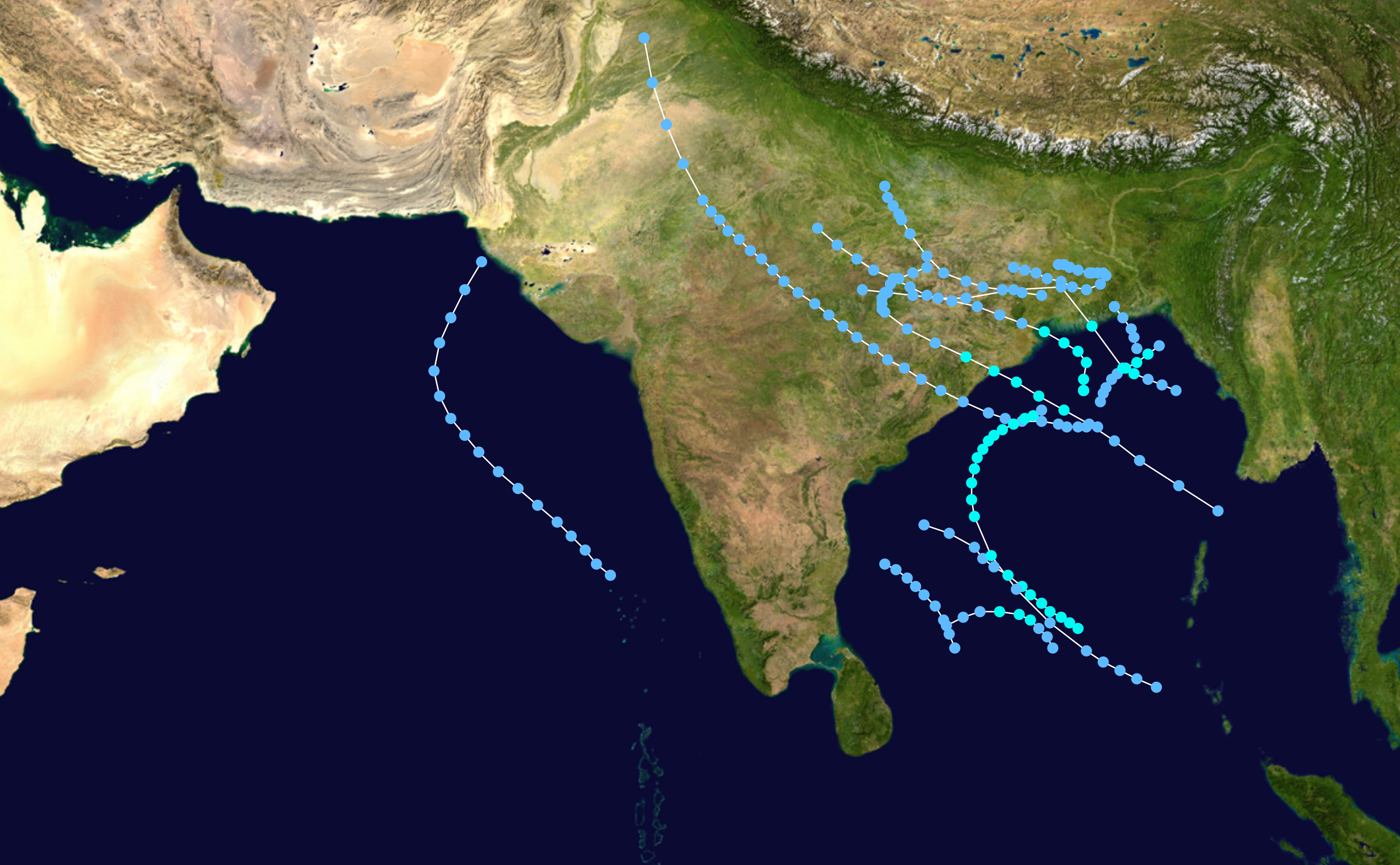|
1928 Pacific Hurricane Season
The 1928 Pacific hurricane season ran through the summer and fall of 1928. Before the weather satellite, satellite age started in the 1960s, data on east Pacific hurricanes was extremely unreliable. Most east Pacific storms were of no threat to land. Systems Tropical Cyclone One A weak tropical cyclone existed south of the Gulf of California was spotted on May 24. It moved westward, and was last seen on May 27. The lowest pressure reported was . Tropical Cyclone Two A tropical cyclone in the Gulf of Tehuantepec produced gales on June 5. The lowest reported pressure was . Hurricane Three A hurricane existed south of Cape Corrientes on July 28 and 29. The lowest reported pressure was a reading of . Hurricane Four A tropical cyclone was noticed just south of the Mexican coast on August 6. This system might have formed south of Costa Rica three days earlier. Wherever it formed, this tropical cyclone intensified into a hurricane, and paralleled the coast. It passed south of the Gulf ... [...More Info...] [...Related Items...] OR: [Wikipedia] [Google] [Baidu] |
1926 Pacific Hurricane Season
The 1926 Pacific hurricane season ran through the summer and fall of 1926. Before the weather satellite, satellite age started in the 1960s, data on east Pacific hurricanes was extremely unreliable. Most east Pacific storms were of no threat to land. Systems Tropical Storm One A tropical storm existed in the Gulf of Tehuantepec on June 13. The lowest reported pressure was . Hurricane Two Well south of Mexico, a tropical cyclone formed on July 5. It moved northwestward, and was last observed on July 9 while located south of the southern tip of the Baja California Peninsula. It was a hurricane, and the lowest reported pressure was . Tropical Cyclone Three Far from land, a tropical cyclone was reported on July 21. It had gale-force winds and a minimum reported pressure of . Tropical Cyclone Four On August 8, a tropical cyclone began forming. It was definitely extant on August 11, and was last seen on August 15. It caused gales and had a lowest reported pressure of . Tropical Cycl ... [...More Info...] [...Related Items...] OR: [Wikipedia] [Google] [Baidu] |
1927 Pacific Hurricane Season
The 1927 Pacific hurricane season ran through the summer and fall of 1927. Before the satellite age started in the 1960s, data on east Pacific hurricanes was extremely unreliable. Most east Pacific storms were of no threat to land. Systems Tropical Cyclone One A tropical cyclone moved along the coast of Mexico from June 14 to 18. It had gale-force winds and a minimum reported pressure of . Tropical Cyclone Two A tropical storm existed off the coast of Mexico during late June. The initial low pressure area formed near the Gulf of Tehuantepec on June 23, moving west-northwest near the coast into July 1. Tropical Cyclone Three A small tropical cyclone was detected on July 1. Its lowest reported pressure was , and was moving along the coast of Mexico. Tropical Cyclone Four A ship encountered a tropical cyclone on July 5. The ship reported a pressure of . The cyclone was moving west-northwest. Tropical Cyclone Five On July 28, a tropical cyclone moved eastward in the Gulf of Tehua ... [...More Info...] [...Related Items...] OR: [Wikipedia] [Google] [Baidu] |
1929 Pacific Hurricane Season
The 1929 Pacific hurricane season ran through the summer and fall of 1929. Before the weather satellite, satellite age started in the 1960s, data on east Pacific hurricanes was extremely unreliable. Most east Pacific storms were of no threat to land. Systems Hurricane One A "tropical hurricane" made a clockwise loop near Johnston Island between March 20 and 24. Tropical Cyclone Two A tropical cyclone existed from May 29 to June 1. Starting from a location southwest of the Gulf of Tehuantepec, it traveled west-northwestward not far off the Mexican shore. A ship recorded its lowest known pressure of . Tropical Cyclone Three A cyclone existed southwest of Acapulco on June 16 and 17. It produced gales, and a ship reported a pressure reading of . Hurricane Four On August 2, a tropical cyclone formed near the Mexican coast. It eventually became a hurricane, and was last seen on August 6. The lowest pressure reported in association with this system was . Possible Tropical Cyclone Fiv ... [...More Info...] [...Related Items...] OR: [Wikipedia] [Google] [Baidu] |
1930 Pacific Hurricane Season
The 1930 Pacific hurricane season ran through the summer and fall of 1930. Before the weather satellite, satellite age started in the 1960s, data on east Pacific hurricanes was extremely unreliable. Most east Pacific storms were of no threat to land. Systems Hurricane One On June 4, a tropical cyclone formed south of the Gulf of Tehuantepec. It paralleled the coast, became a hurricane, and approached the coast. On June 11, it made landfall north of Mazatlán and dissipated inland. Some damage in Mazatlán was reported. Tropical Cyclone Two From August 18 to 20, a tropical cyclone existed in the waters west of Manzanillo. A ship reported a pressure of . Hurricane Three On October 3, a tropical cyclone formed near the Revillagigedo Islands. It slowly moved northeasterly, became very intense, and made landfall north of Mazatlán on October 4 or October 5. Once inland, it greatly increased in speed, and dissipated October 7, while over Arkansas. A ship in the eye of the hurricane re ... [...More Info...] [...Related Items...] OR: [Wikipedia] [Google] [Baidu] |
Weather Satellite
A weather satellite or meteorological satellite is a type of Earth observation satellite that is primarily used to monitor the weather and climate of the Earth. Satellites can be polar orbiting (covering the entire Earth asynchronously), or geostationary (hovering over the same spot on the equator). While primarily used to detect the development and movement of storm systems and other cloud patterns, meteorological satellites can also detect other phenomena such as city lights, fires, effects of pollution, auroras, sand and dust storms, snow cover, ice mapping, boundaries of ocean currents, and energy flows. Other types of environmental information are collected using weather satellites. Weather satellite images helped in monitoring the volcanic ash cloud from Mount St. Helens and activity from other volcanoes such as Mount Etna. Smoke from fires in the western United States such as Colorado and Utah have also been monitored. El Niño and its effects on weather are monitored ... [...More Info...] [...Related Items...] OR: [Wikipedia] [Google] [Baidu] |
Monthly Weather Review
The ''Monthly Weather Review'' is a peer-reviewed scientific journal published by the American Meteorological Society. It covers research related to analysis and prediction of observed and modeled circulations of the atmosphere, including technique development, data assimilation, model validation, and relevant case studies. This includes papers on numerical techniques and data assimilation techniques that apply to the atmosphere and/or ocean environment. The editor-in-chief is David M. Schultz (University of Manchester). History The journal was established in July 1872 by the United States Army Signal Corps. It was issued by the Office of the Chief Signal Officer from 1872 until 1891. In 1891, the Signal Office's meteorological responsibilities were transferred to the Weather Bureau under the United States Department of Agriculture. The Weather Bureau published the journal until 1970 when the Bureau became part of the newly formed National Oceanic and Atmospheric Administration, ... [...More Info...] [...Related Items...] OR: [Wikipedia] [Google] [Baidu] |
Gulf Of Mexico
The Gulf of Mexico ( es, Golfo de México) is an oceanic basin, ocean basin and a marginal sea of the Atlantic Ocean, largely surrounded by the North American continent. It is bounded on the northeast, north and northwest by the Gulf Coast of the United States; on the southwest and south by the Mexico, Mexican States of Mexico, states of Tamaulipas, Veracruz, Tabasco, Campeche, Yucatan, and Quintana Roo; and on the southeast by Cuba. The Southern United States, Southern U.S. states of Texas, Louisiana, Mississippi, Alabama, and Florida, which border the Gulf on the north, are often referred to as the "Third Coast" of the United States (in addition to its Atlantic and Pacific Ocean, Pacific coasts). The Gulf of Mexico took shape approximately 300 million years ago as a result of plate tectonics.Huerta, A.D., and D.L. Harry (2012) ''Wilson cycles, tectonic inheritance, and rifting of the North American Gulf of Mexico continental margin.'' Geosphere. 8(1):GES00725.1, first p ... [...More Info...] [...Related Items...] OR: [Wikipedia] [Google] [Baidu] |
Brownsville, Texas
Brownsville () is a city in Cameron County in the U.S. state of Texas. It is on the western Gulf Coast in South Texas, adjacent to the border with Matamoros, Mexico. The city covers , and has a population of 186,738 as of the 2020 census. It is the 139th-largest city in the United States and 18th-largest in Texas. It is part of the Matamoros–Brownsville metropolitan area. The city is known for its year-round subtropical climate, deep-water seaport, and Hispanic culture. The city was founded in 1848 by American entrepreneur Charles Stillman after he developed a successful river-boat company nearby. It was named for Fort Brown, itself named after Major Jacob Brown, who fought and died while serving as a U.S. Army soldier during the Mexican–American War (1846–1848). As a county seat, the city and county governments are major employers. Other primary employers fall within the service, trade, and manufacturing industries, including a growing aerospace and space transpor ... [...More Info...] [...Related Items...] OR: [Wikipedia] [Google] [Baidu] |
1928 Atlantic Hurricane Season
The 1928 Atlantic hurricane season featured the 1928 Okeechobee hurricane, Okeechobee hurricane, the second deadliest tropical cyclone in the history of the contiguous United States. Only seven tropical cyclones developed during the Atlantic hurricane season, season. Of these seven tropical systems, six of them intensified into a tropical storm and four further strengthened into hurricanes. One hurricane deepened into a major hurricane, which is Category 3 or higher on the modern-day Saffir–Simpson hurricane wind scale. The first system, the 1928 Fort Pierce hurricane, Fort Pierce hurricane, developed near the Lesser Antilles on August 3. The storm crossed the Bahamas and made Landfall (meteorology), landfall in Florida. Two fatalities and approximately $235,000 in damage was reported. A few days after the first storm developed, the 1928 Haiti hurricane, Haiti hurricane, formed near the southern Windward Islands on August 7. The storm went on to strike Haiti, Cuba, ... [...More Info...] [...Related Items...] OR: [Wikipedia] [Google] [Baidu] |
1928 Pacific Typhoon Season
Nineteen or 19 may refer to: * 19 (number), the natural number following 18 and preceding 20 * one of the years 19 BC, AD 19, 1919, 2019 Films * 19 (film), ''19'' (film), a 2001 Japanese film * Nineteen (film), ''Nineteen'' (film), a 1987 science fiction film Music * 19 (band), a Japanese pop music duo Albums * 19 (Adele album), ''19'' (Adele album), 2008 * ''19'', a 2003 album by Alsou * ''19'', a 2006 album by Evan Yo * ''19'', a 2018 album by MHD (rapper), MHD * ''19'', one half of the double album ''63/19'' by Kool A.D. * ''Number Nineteen'', a 1971 album by American jazz pianist Mal Waldron * XIX (EP), ''XIX'' (EP), a 2019 EP by 1the9 Songs * 19 (song), "19" (song), a 1985 song by British musician Paul Hardcastle. * "Nineteen", a song by Bad4Good from the 1992 album ''Refugee (Bad4Good album), Refugee'' * "Nineteen", a song by Karma to Burn from the 2001 album ''Almost Heathen''. * Nineteen (song), "Nineteen" (song), a 2007 song by American singer Billy Ray Cyrus ... [...More Info...] [...Related Items...] OR: [Wikipedia] [Google] [Baidu] |
1920s North Indian Ocean Cyclone Seasons
The following is a list of North Indian Ocean tropical cyclones from 1920 to 1929. Records from before the 1970s were extremely unreliable, and storms that stayed at sea were often only reported by ship reports. 1928 *December 31, 1927 – January 5, 1928 – A depression existed over the southern Bay of Bengal. *February 29 – March 6, 1928 – A depression existed over the northeastern Arabian Sea. *March 24–28, 1928 – A cyclonic storm existed over the southern Bay of Bengal. 1927 A tropical storm struck Maharashtra 1929 There were 15 depressions and 6 cyclonic storms. See also * 1920s Australian region cyclone seasons * 1900–1940 South Pacific cyclone seasons * 1900–1950 South-West Indian Ocean cyclone seasons *Atlantic hurricane seasons: 1920, 1921, 1922, 1923, 1924, 1925, 1926, 1927, 1928, 1929 *Eastern Pacific hurricane seasons: 1920, 1921, 1922, 1923, 1924, 1925, 1926, 1927, 1928, 1929 *Western Pacific typhoon seasons: 1920, 19 ... [...More Info...] [...Related Items...] OR: [Wikipedia] [Google] [Baidu] |
1928 In Mexico
Events from the year 1928 in Mexico Incumbents Federal government *President: **Plutarco Elías Calles (until November 30) **Emilio Portes Gil (starting December 1) * Secretariat of the Interior, Interior Secretary (SEGOB): * Secretary of Foreign Affairs (Mexico), Secretary of Foreign Affairs (SRE): * Secretariat of Communications and Transportation (Mexico), Communications Secretary (SCT): * Secretariat of Public Education (Mexico), Education Secretary (SEP): Supreme Court * President of the Supreme Court: Governors * Governor of Aguascalientes, Aguascalientes: Isaac Díaz de León (1926-1928), Alberto Díaz de León Bocanegra (1928), Benjamín de la Mora (1928), Manuel Carpio Velázquez (1928-1929) * Governor of Campeche, Campeche: Silvestre Pavón Silva (1927-1928), Pedro Tello Andueza (1928), Ramiro Bojórquez Castillo (1928-1931) * Governor of Chiapas, Chiapas: Federico Martínez Rojas (1927–1928), Amador Coutiño (1928), Rosendo Delabre Santeliz (1928), Raymundo E. E ... [...More Info...] [...Related Items...] OR: [Wikipedia] [Google] [Baidu] |


